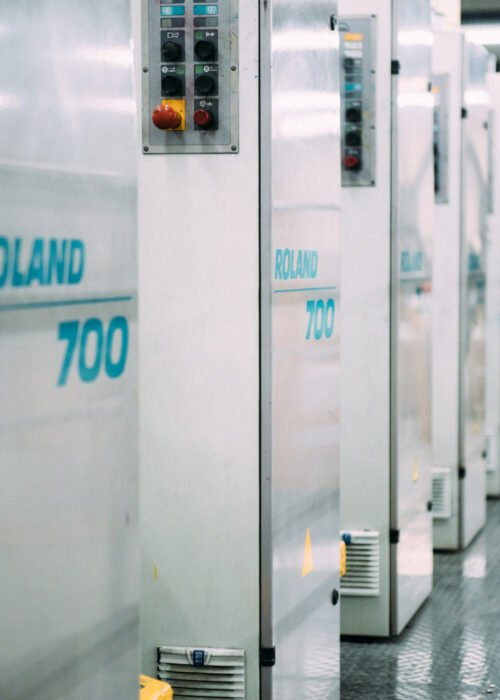28/4/2021
Offset Printing
Offset (Offset) printing is a printing method used to reproduce text and images.

Offset is based on photographing the subject (phototransfer) on the surface of metal printing plates, in such a way, that allows different chemical behavior of different areas of their surface. Modern printing plates contain aluminum, while in the olden days, there were models that contained zinc. That’s why, these kind of printing plates are often called tin. This method has also been described as Lithography, mostly for historical reasons: the first printing plates were made out of a special stone (porous marble). Offset printing is used for printing monochrome and multicolored prints and dominates the publishing - printing industry. The most common forms created with this method are books, newspapers, magazines, posters, advertisements and other publications.
Procedure
Films printed by a special printer and coated with the right chemicals, which are inserted into a special machine called "conveyor" are placed on special aluminum foils with a thin zinc coating. A lamp, similar to solarium ones but much more powerful, works with a timer which is adjusted by the printer, depending on the model. The aluminum foils are placed in special rollers in offset printing machines, after being cleaned with a chemical. Basically, the conveyor "burns" anything that is not covered by the film. After the inks are placed on the roller set, the set processes inks to provide better print quality. Along with the water rollers and the rest of the rollers, they are called a tower. Inks rest on the aluminum foil and the foil on a rubber cylinder with the same name. The rubber is "smeared" with the inks, but in specific spots which rest on the paper, while the inks on the rubber are constantly renewed. The role of water cylinders in offset printing machines is based primarily on the following theory: aluminum is hydrophilic, while zinc is hydrophobic. Water, therefore, only cleans the aluminum, which is located in spots where ink should not pass, thus only the zinc is "smeared" with ink.
Source: wikipedia.org
